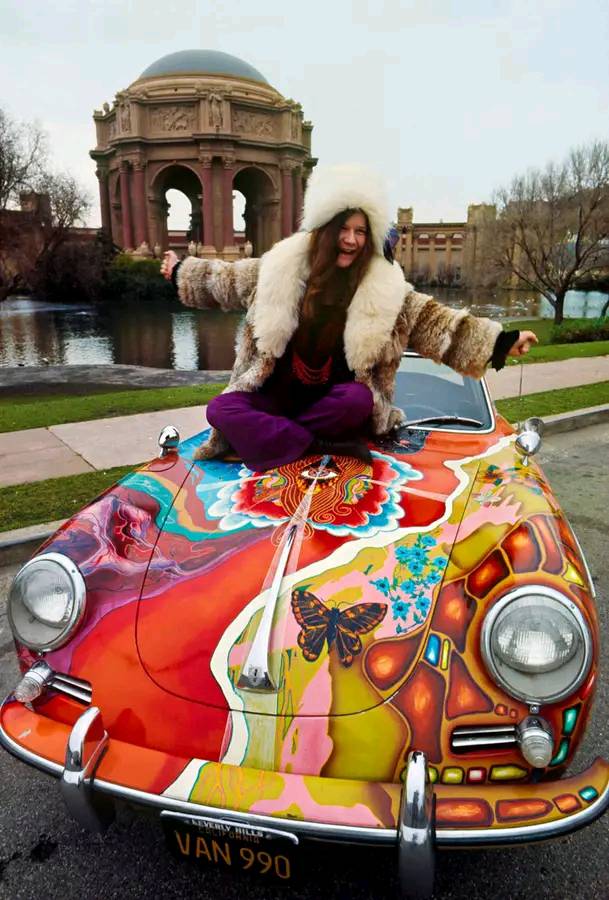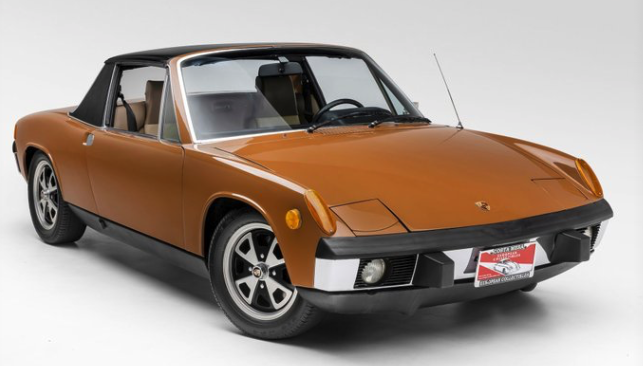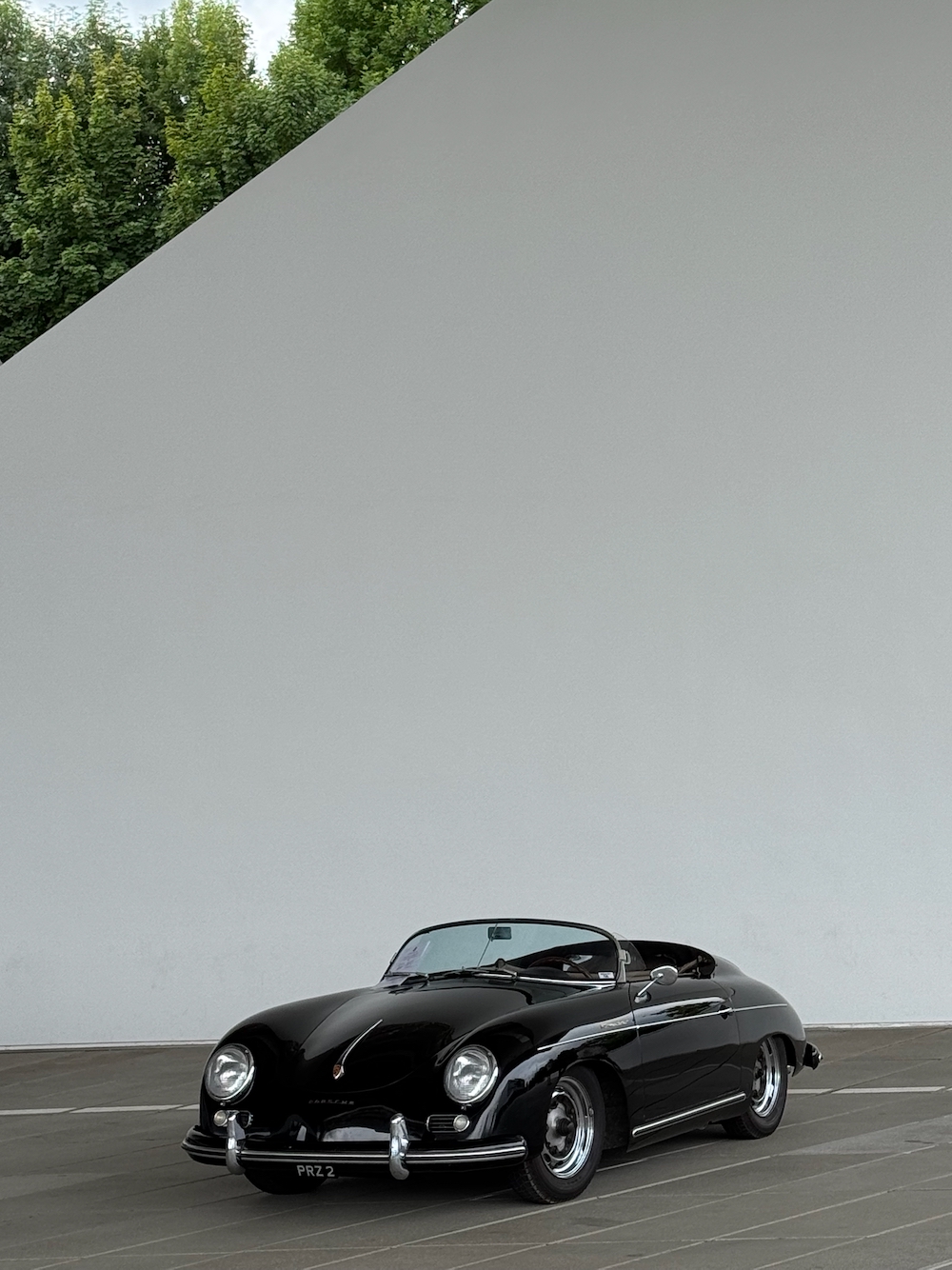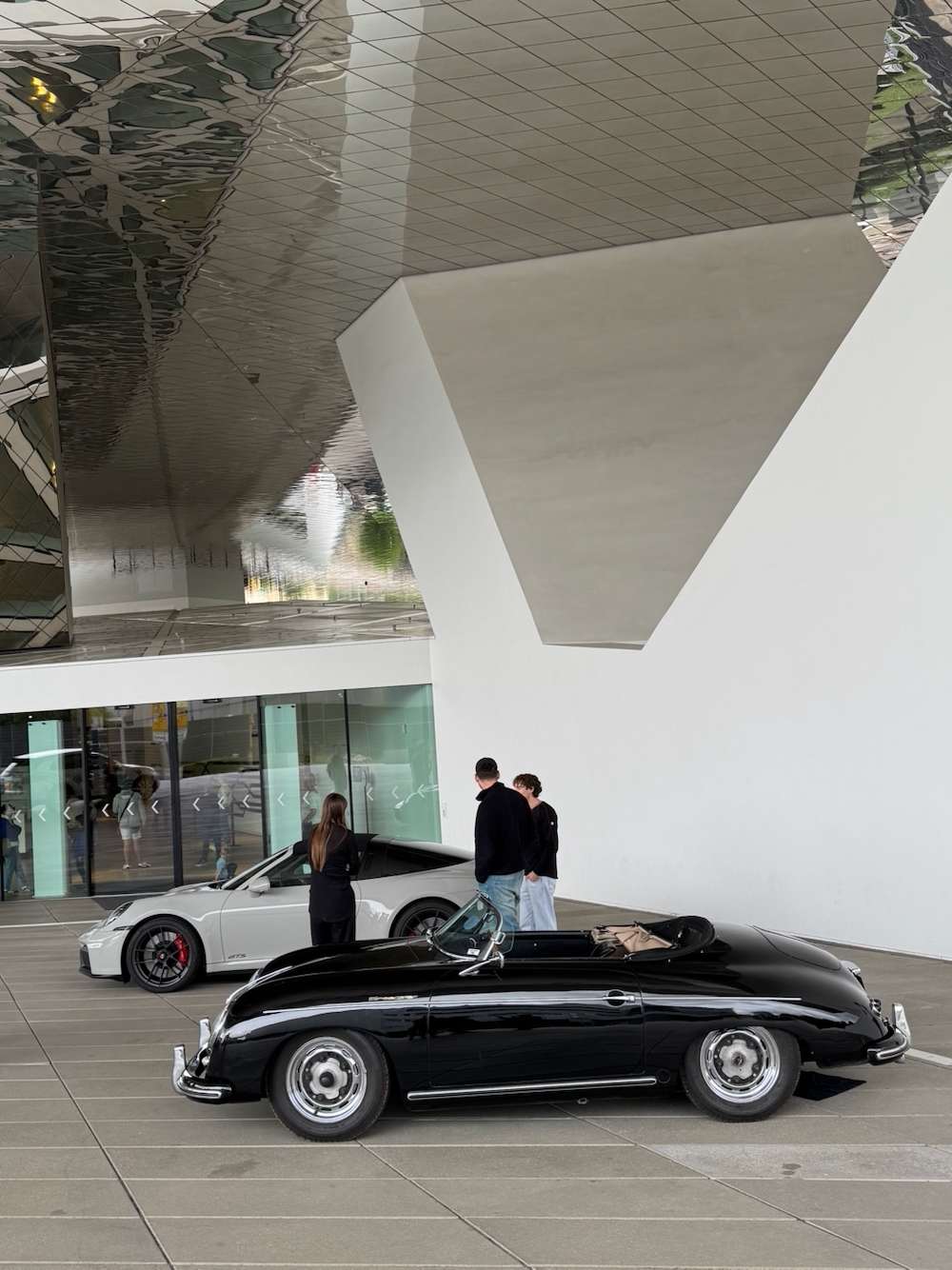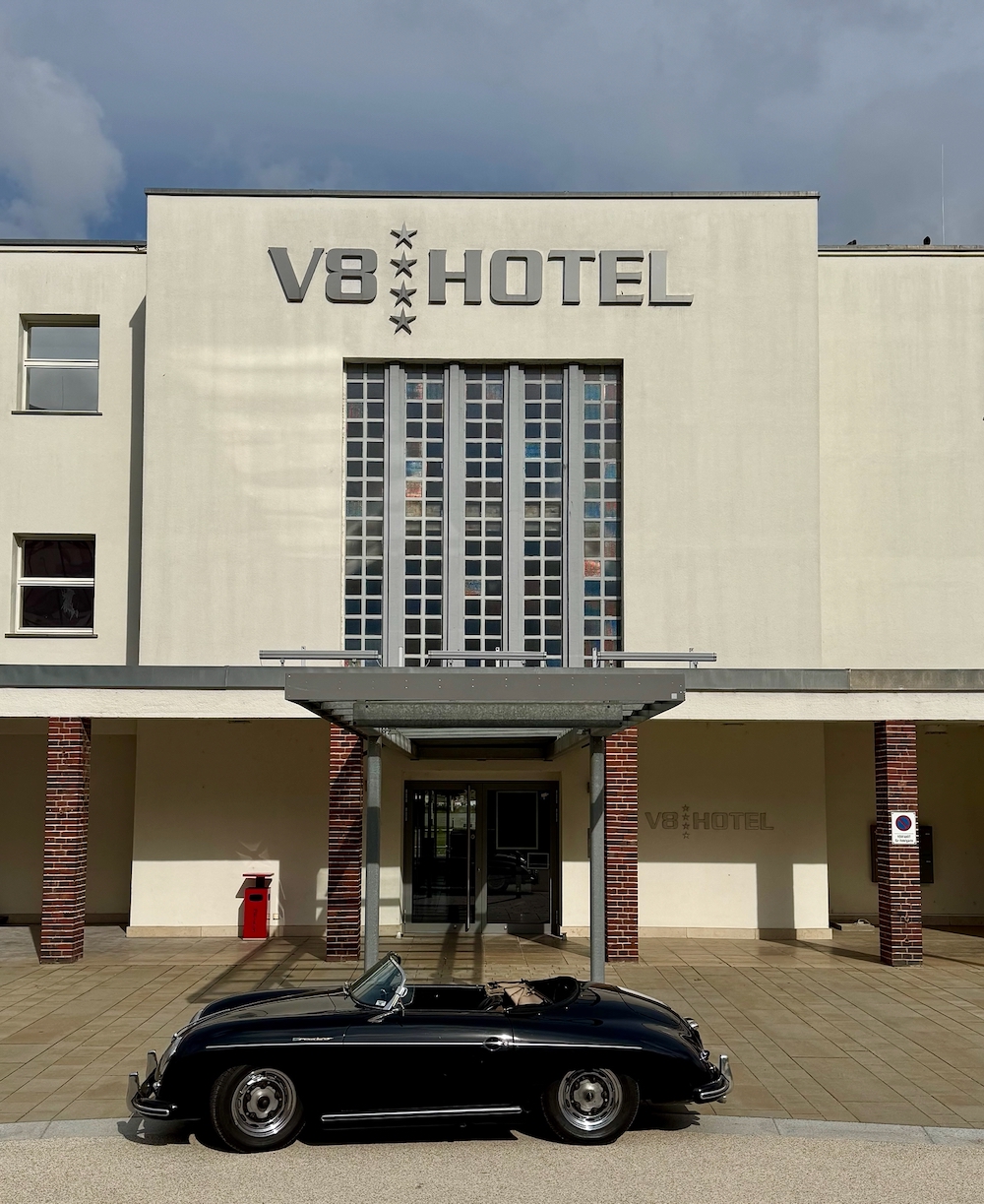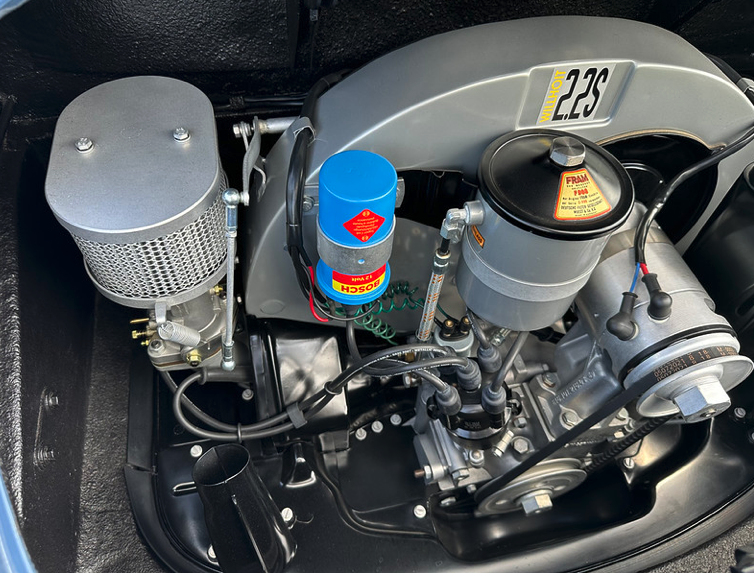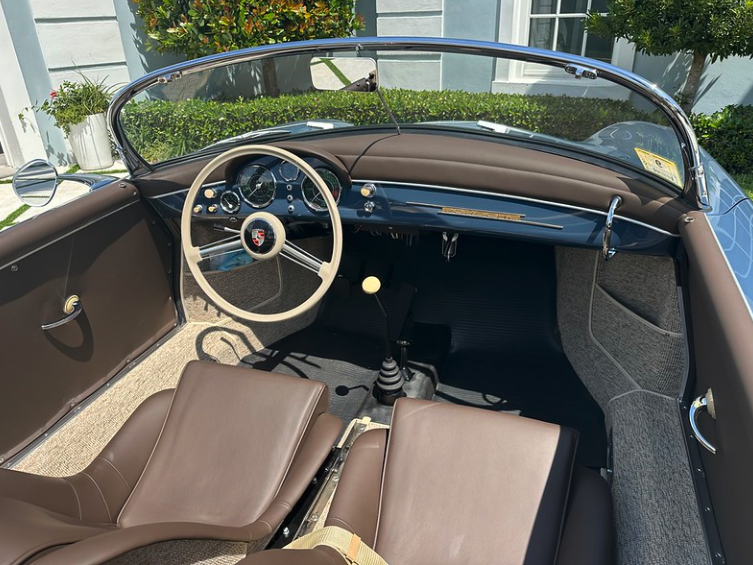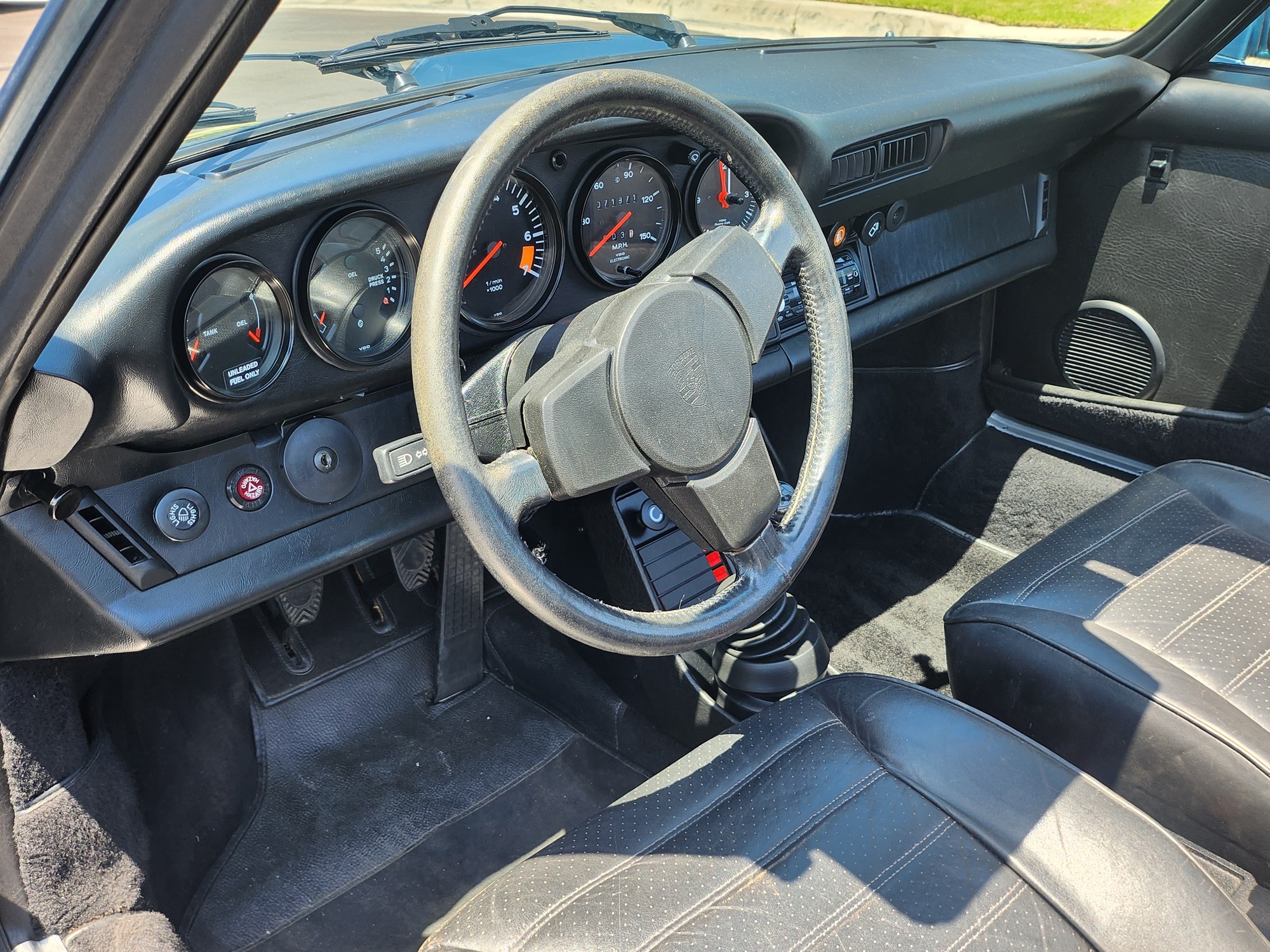Through My Rearview Mirror
Carrera

The Porsche factory-and Fletcher Aviation sponsored 550 Spyder 4-cam 1500cc powered racing team at the Carrera Panamericana Mexico Road Race, 1954. (Photo credit: Porsche AG)
Carrera—Most Porschephiles associate this name with a 900 series, those wide-bodied Porsches with flared fenders and bedecked with front spoilers and large rear wings. However, the Carrera is named, not for a body style, but an engine type that is as old and prominent as the Porsche marque itself.
CARRERA is a Spanish word that means, “road race”- a competition where one strives to be a first-place finisher.
So why is this Spanish name so boldly imprinted in script on so many German-made Porsche models?
The year was 1952. General Dwight D. Eisenhower was elected President of the United States…mainly because he promised to bring the boys home from the Korean War. Interest was at a mere 3%. The Yankees beat the Brooklyn Dodgers 4 games to 3 to win the World Series—and Dr. Ferry Porsche commissioned Ernst Fuhrmann to build a new high performance engine for his race cars. Fuhrmann's new 1500cc, TYP 547 four-cylinder engine used four Hirth overhead roller bearing camshafts to deliver considerably more power than the original VW-based mills.
This engine was first bolted to the Factory’s open two-seater racers for the 1953 race campaign. Thus, the Carrera engine was born and proudly named in honor of the grueling five-day, 1,934-mile Carrera Panamericana Mexican Road Races that were held from 1950 to 1954. Factory-prepared Porsches participated in the Carrera Panamericana Road Races with pushrod powered 550s to finish with a class victory in 1953.
For 1954, the Fuhrmann Four Cam engine was installed in the new TYP 550 Spyder for the Porsche Werks’ endurance racing program. The result was a winning combination of engine and body design that became competitive on the international racing circuits of Reims, Nurburgring, Le Mans, and the Carrera Panamericana Mexican Road Race.
Carrera engines were manufactured at Stuttgart-Zuffenhausen with 110 horsepower from 1.5 litres; and later the engine displacement was increased to 1.6 litres and produced 150 horsepower. Racing successes were achieved among the TYP 550/718 Spyders, TYP 540 Speedsters, and TYP 356 Coupes at major international events.
In 1961, the Factory developed a 2-litre engine that was displayed to the public at the Frankfurt International Motor Show in a newly designed TYP 356 B GS/GT Coupe, which was more aerodynamic than the previous A and B production models.
This racing model had a 1966cc Carrera engine which featured twin ignition systems and a pair of Solex carburetors. The 356B Carrera GS/GT coupe cranked out 152 horsepower at 6200rpm with a top speed of 130 miles per hour.
Porsche continued to use the Carrera 2 litre four cam engine (and later, a flat eight) to power their first ever fiberglass and ladder frame bodied sports racing car --the TYP 904 GTS. The new 904 GTS, designed by Ferdinand “Butzi” Porsche, became an immediate success for the Werks’ FIA GT racing class during 1964-1965 at Reims, Sebring and Le Mans. The 904 GTS was also successful in international rallye competition.
In 1966, Porsche debuted Ferdinand Piech’s designed TYP 906, named the “Carrera 6.” became homologated for FIA racing. The new Carrera 6 employed an aerodynamic unstressed fiberglass body over a light weight tubular space frame chassis, with the flat-six Carrera engine from 904/6 variants. The Carrera 6 long tail would win the 1966 World Sportscar Championship and the 1966 - 1968 European Hillclimb Championships.
In 1973, the Carrera name officially appeared on the last of the long-hood 911s with the Carrera RS. The 2.7-litre Carrera RS was a built as a limited production special to meet homologation rules for various racing organizations. It was available in several different versions including a lightweight Sport (200 made) and a more street oriented Touring version (1308 produced) as well as an even more limited production full race version—the RSR (less than 60 made.) The street legal Carrera's 2.7 litre engine churned out 200 horsepower while having a top speed of 150 mph in street form. It was the first 911 to feature a small "ducktail" rear spoiler to help the rear of the car stay planted at these heady speeds.
That rear spoiler became a defining feature of the Carrera, and by 1975, it grew an even larger tail, with an upturned rubber lip that protected the delicate fiberglass engine lid and gave a little more downforce. Displacement was bumped to 3.0 litres in 1974 with the change to the G-Body, which unfortunately also gained the heavier 'impact bumpers'. In 1976, the Carrera picked up a turbocharger and a new name: “Turbo Carrera.”
The Turbo Carrera was a beast; it tested out at 256 horsepower with a top speed of 155 miles per hour. The turbocharged engine was truly amazing, as the exhaust driven turbine wheel developed speeds of up to 90,000 rpm, pre-compressing air to a density of 11.4 psi. Of course, the fuel injection was commensurately modified to maintain the proper air and fuel ratio.
Stuttgart-Zuffenhausen continued to promote the legendary Carrera name for over five decades with the production of the following models:
TYP 911 Carrera G-Series…1974 to 1989 (1974-1976 Carrera 2.7), (1978-1983 911 SC), (1984-1989 Carrera 3.2)
TYP 924 Carrera….(1980 GT), (1981 GTS)
TYP 930 Carrera…1975 to 1989 G-Series, (1975-1977 3.0 Turbo H6), (1978 -1989 3.3 Turbo H6)
TYP 964 Carrera….1989 to 1994 (Carrera 4 / Carrera 2, RS / RS America, Targa, Cabriolet models)
TYP 993 Carrera…1994 to 1998 (Last of air-cooled engine . Carrera S / Carrera 4S / Turbo / Turbo S)
TYP 996 Carrera…1998 to 2006 (2002 996.2 introduced with Targa and Carrera 4S models)
TYP 980 Carrera… (Carrera GT) 2003 to 2006 (1,270 units built)
TYP 997 Carrera…2005 to 2012 (2005 -2008 997.1, 2009-2012 997.2 becomes a facelifted version)
TYP 991 Carrera…2012 to 2019 ( 991.1 / 991.2/ T). Seventh generation with longer wheelbase, wider track)
TYP 992 Carrera…2019 to present. Eighth generation. (2021 introduced 992 GT3 / 2021 992 GT3 RS/ T in 2023)
CARRERA. A distinctive name and script representing Porsche’s racing legacy…one of prestige and perfection…Driven by Dreams.
*Lee Raskin is an internationally recognized Porsche 356/550 historian and an author of acclaimed photographic biographies.
Copyright Lee Raskin, 2025.

